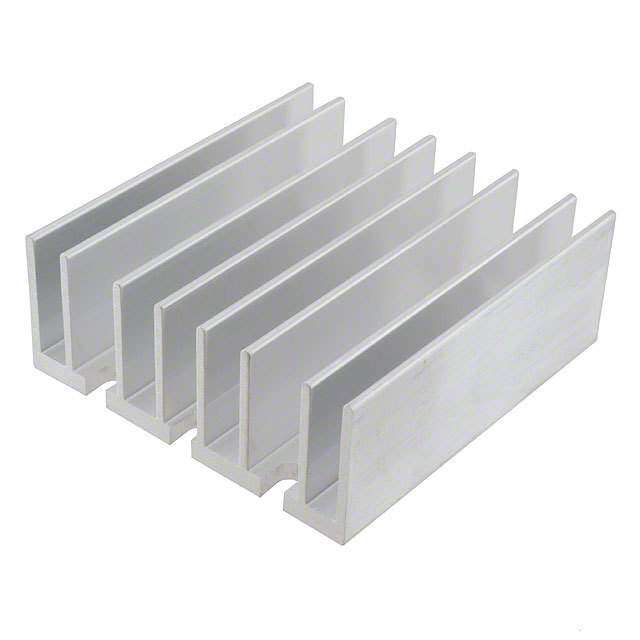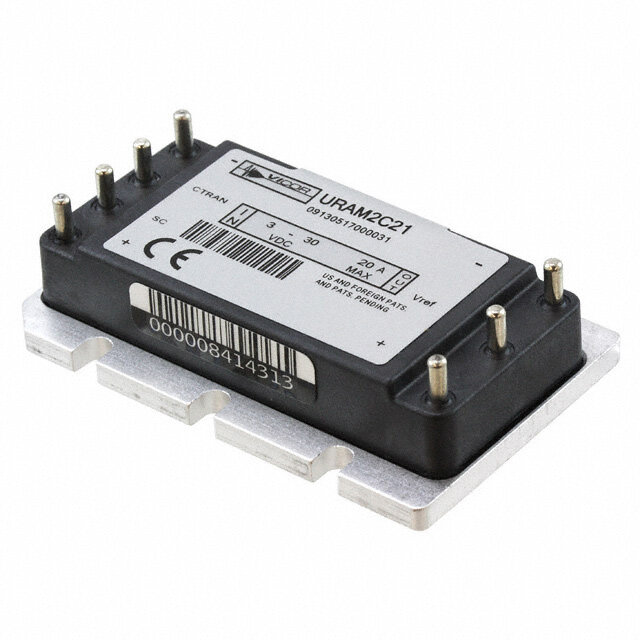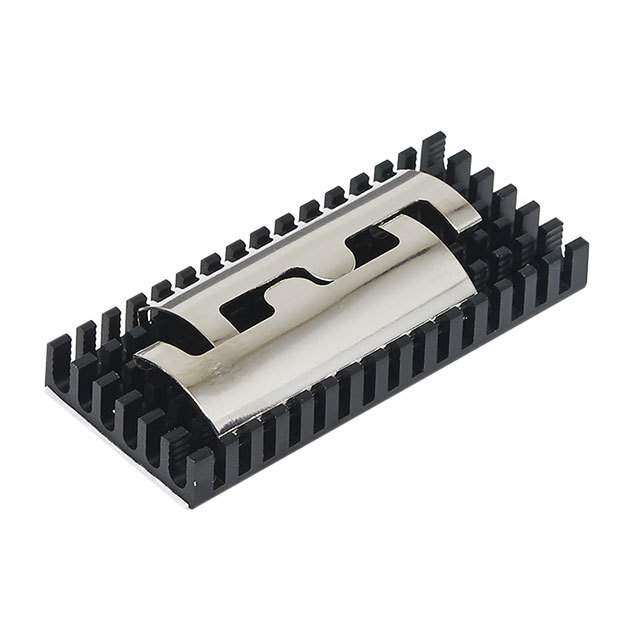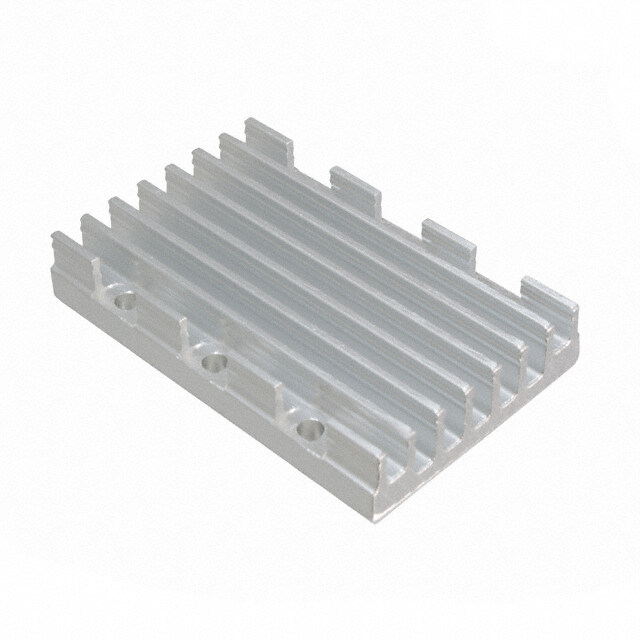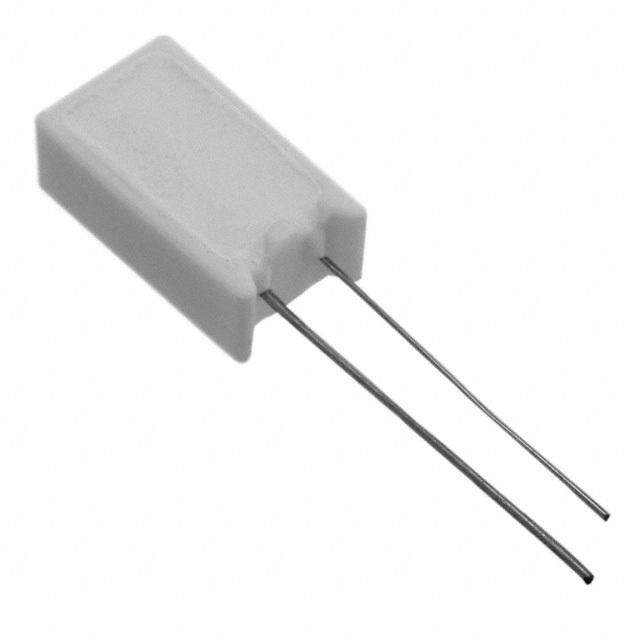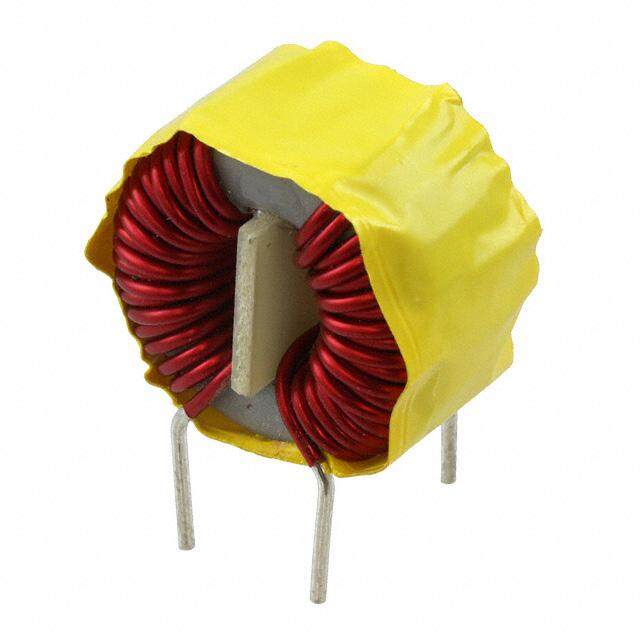- 型号: F4804A-G
- 制造商: Power-One
- 库位|库存: xxxx|xxxx
- 要求:
| 数量阶梯 | 香港交货 | 国内含税 |
| +xxxx | $xxxx | ¥xxxx |
查看当月历史价格
查看今年历史价格
F4804A-G产品简介:
ICGOO电子元器件商城为您提供F4804A-G由Power-One设计生产,在icgoo商城现货销售,并且可以通过原厂、代理商等渠道进行代购。 F4804A-G价格参考。Power-OneF4804A-G封装/规格:配件, 。您可以下载F4804A-G参考资料、Datasheet数据手册功能说明书,资料中有F4804A-G 详细功能的应用电路图电压和使用方法及教程。
| 参数 | 数值 |
| 产品目录 | |
| 描述 | DC-DC CONV INP FILTER 4A SMD |
| 产品分类 | |
| 品牌 | Bel Power Solutions |
| 数据手册 | |
| 产品图片 | |
| 产品型号 | F4804A-G |
| rohs | 无铅 / 符合限制有害物质指令(RoHS)规范要求 |
| 产品系列 | F |
| 其它名称 | 179-2439-2 |
| 标准包装 | 400 |
| 配件类型 | 输入 EMI 滤波器 |
| 配套使用产品/相关产品 | DC-DC 转换器 |

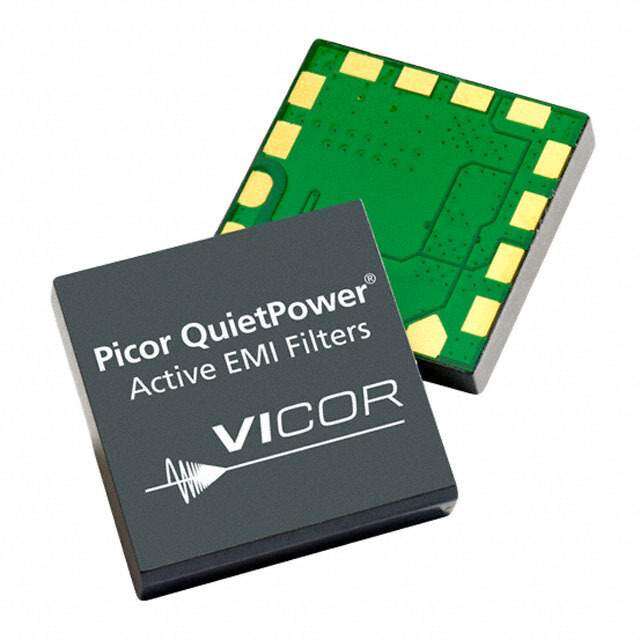
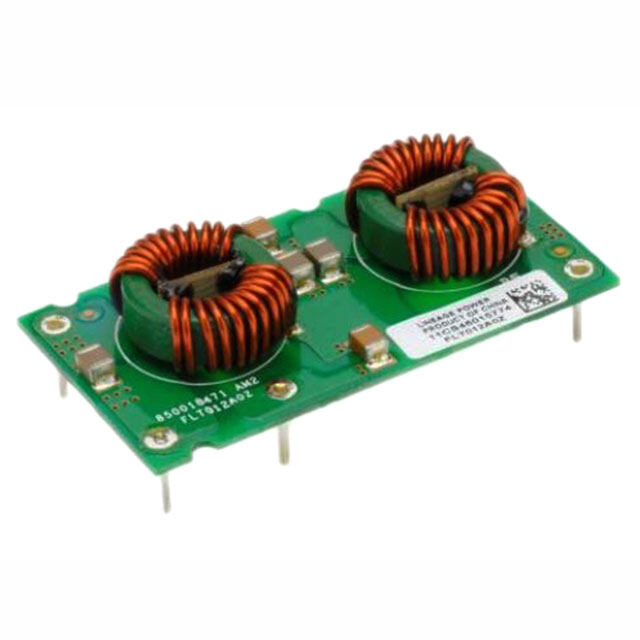

- 商务部:美国ITC正式对集成电路等产品启动337调查
- 曝三星4nm工艺存在良率问题 高通将骁龙8 Gen1或转产台积电
- 太阳诱电将投资9.5亿元在常州建新厂生产MLCC 预计2023年完工
- 英特尔发布欧洲新工厂建设计划 深化IDM 2.0 战略
- 台积电先进制程称霸业界 有大客户加持明年业绩稳了
- 达到5530亿美元!SIA预计今年全球半导体销售额将创下新高
- 英特尔拟将自动驾驶子公司Mobileye上市 估值或超500亿美元
- 三星加码芯片和SET,合并消费电子和移动部门,撤换高东真等 CEO
- 三星电子宣布重大人事变动 还合并消费电子和移动部门
- 海关总署:前11个月进口集成电路产品价值2.52万亿元 增长14.8%
PDF Datasheet 数据手册内容提取
Bel Power Solutions offers a complete range of input filters to help control EMI in board-level DC-DC converter applications. The table below lists combinations of input filters and DC-DC converters that have test data available. These test results are presented only to provide general guidelines, as EMI issues vary considerably based on many variables specific to each application. Due to the large number of possible permutations of DC-DC converters and input filters, not all combinations have been tested. Therefore, please refer to the data presented for each filter to select filters that may work in combinations not specified below. DC-DC CONVERTER SERIES TESTED WITH FILTER MODEL NUMBERS FILTER SERIES PAGE FES FC100V20A FC 13 HBD FC100V5A FC 13 HES FC100V5A FC 13 IAD FC100V5A FC 13 IAS FC100V5A FC 13 IES FC100V5A FC 13 LES FC100V5A FC 13 OET FC100V5A FC 13 Q24 F2410 F 2, 7 Q48 F4804A, F4810 F 2, 7 QBS FC100V5A FC 13 QD48 F4804A, F4810 F 2, 7 QES FC100V5A FC 13 QL48 F4804A, F4810 F 2, 7 QM48 F4810 F 7 QME48 F4810 F 7 SQ24 F2410 F 2, 7 SQ48 F4804A, F4810 F 2, 7 SQE48 F4804A, F4810 F 2, 7 SQM48 F4804A, F4810 F 2, 7 SQT48 F4810 F 7 North America +1-866.513.2839 Asia-Pacific +86.755.29885888 Europe, Middle East +353 61 225 977 Bel Power Solutions 152 North 3rd Street, Suite 805 tech.support@psbel.com San Jose, CA 95112 USA belpowersolutions.com © 2015 Bel Power Solutions, inc. BCD.00344_AB
The F4804A Input Filter minimizes the conducted and radiated emissions generated by switch mode DC-DC converters, and allows board designs utilizing DC-DC converters to meet stringent FCC and EN55022 Class B conducted emissions requirements. Unlike most available off-the-shelf filter modules, the F4804A, in addition to common mode noise reduction components, is provisioned with a differential LC-filter stage, which virtually guarantees compliance with conducted noise standards across the frequency range from 150 kHz to 30 MHz, including fundamental switching frequency and its harmonics. Test results show headroom of 15-20 dB for conducted noise quasi-peak levels, in relation to Class B requirements. F4804A filter is designed specifically for distributed power solutions in conjunction with DC-DC converters. Low profile and small size (only 0.75 sq. in.) in a surface mount package helps the designer save system board real estate, and simplifies the layout. A single filter can be used with multiple converters, and RoHS lead free solder and lead solder exempted is capable of providing up to 4 A to the converter input products are available bus at 85 °C. When used as specified within this data Maximum current 4 A with no derating sheet, these filters do not require airflow and/or derating Maximum operating input voltage 80 V at high temperatures. 100 V 100 mS transient withstand capability Differential LC-filter stage Surface mounted design Small footprint – only 0.75 sq. inch Low profile: 0.267 inch [6.7 mm] maximum Low weight: 0.13 oz [3.66 g] Operation over -40°C to 85 °C ambient temperature Differential and Common Mode filtering for DC-DC range converters: No airflow required up to 85 °C o Telecommunications Enables DC-DC converter compliance with o Data communications EN55022 and FCC Class B requirements o Distributed Power Solutions conducted emissions Approved to the latest revision of safety standards: UL/CSA60950-1 and EN/IEC60950-1 866.513.2839 tech.support@psbel.com belpowersolutions.com © 2015 Bel Power Solutions, inc. BCD.00344_AB
Conditions: TA = 25 ºC, No Airflow, Vin = 48 VDC, unless otherwise specified. PARAMETER NOTES MIN TYP MAX UNITS Absolute Maximum Ratings Input Voltage Continuous 0 100 VDC Operating Ambient Temperature -40 85 °C Storage Temperature -55 125 °C Electrical Characteristics Operating Input Voltage Range 0 48 80 VDC Maximum Operating Current 85 °C ambient, no airflow 4 ADC DC Resistance (total for two legs) 0.07 Ω Filter differential inductance 5 µH Filter common mode inductance For frequencies below 10 MHz 60 µH Differential mode Attenuation at 400 kHz1 35 dB Differential mode attenuation at 30 MHz1 56 dB Common mode Attenuation at 400 kHz2 50 dB Common mode Attenuation at 30 MHz2 60 dB Efficiency at Maximum Load Vin = 48V @ 4 A 99.2 99.4 % The F4804A filter contains input and output capacitors, plus differential and common mode inductors. The separate differential inductor, L2, allows a differential attenuation of 55 dB, a value substantially higher in comparison with other available off-the-shelf filters (typically 25-30 dB). Absolute maximum voltage and maximum operating voltage in Electrical Specifications Table are for the filter itself; check maximum rating for corresponding DC-DC converters. Filter will not be damaged by reversed input voltage, or by applying voltage to the output pins. Figure1 - Schematic Diagram 1 50 Ω source and 50 Ω load impedance. See Figure 2 for differential mode attenuation in 50 kHz-100 MHz frequency range. 2 50 Ω source and 50 Ω load impedance; external common-mode capacitors 0.47 µF (from IN+ and IN- to the common chassis). See Figure 3 and Figure 4 for attenuation in 50 kHz-100 MHz frequency range. 866.513.2839 tech.support@psbel.com belpowersolutions.com © 2015 Bel Power Solutions, inc. BCD.00344_AB
Differential attenuation plot in the frequency range of 50 kHz-100 MHz is shown in Figure 2, and can be seen to be flat (around 55-60 dB) from 0.5 MHz to 50 MHz. Figure 2 - Differential mode attenuation, 0.05-100 MHz. Source and load resistances are 50 Ω. Vertical scale: 20 dB/div, with zero level marked by arrow. No load @ 25 ºC Figure 3 and Figure 4 show Common mode attenuation with 50 Ω source and load. The attenuation depends on the value of external Y-capacitors, connected between input pins and frame or a reference ground. Figure 3 - Common Mode attenuation, 0.05-100 MHz. Source and Figure 4 - Common Mode attenuation, 0.05-100 MHz. Source and load resistances are 50 Ω. Two 0.1µF Y-caps to common line. load resistances are 50 Ω. Two 0.47 µF Y-caps to common line. Vertical scale: 20 dB/div, with zero dB level marked by arrow. Vertical scale: 20 dB/div, with zero dB level marked by arrow. 866.513.2839 tech.support@psbel.com belpowersolutions.com © 2015 Bel Power Solutions, inc. BCD.00344_AB
Because of low series internal DC resistance, the F4804A filter generally does not require airflow and/or derating to ambient temperatures up to 85 ˚C, if placed and interconnected as described below. Good thermal design includes the appropriate placement of the filter on the system board as to maximize heat exchange through the power pins. For high temperature operation in low airflow environments, use of 1-2 oz copper for the external connection pads and provision for some extra copper at all four I/O pins is encouraged. Good thermal connection to the power planes is important. To check filter thermal characteristic in an actual system environment, attach a thermocouple to the top of each inductor. The maximum temperature at these test points should not exceed 120 ˚C. A typical application schematic is shown in Figure 5. The filter can be used to Bel Power Solutions or more converters. For applications requiring filter current greater than 4 A divide the converters into smaller groups and use multiple filters or use a F4810 or F2410 filter which is capable of providing up to 10 A. Do not connect filters in parallel. Figure 5 - F4804A - Typical Application For additional information regarding layout and EMC, refer to the Layout Considerations and EMI Considerations Application notes. The following bulleted items are considerations regarding the external components for the typical application shown in Figure 5. Input electrolytic capacitor C1. We recommend 1-2 µF/W for 48 V applications. This capacitor is needed to ensure stability of converters in presence of their negative input impedance characteristic. Note that electrolytic capacitors at - 40 ºC have 3-5 times less capacitance than at room temperature, and therefore it is good practice to check the power system at worst case conditions from this point of view, i.e. lowest ambient temperature, minimum input voltage, and maximum load. If electrolytic capacitors are restricted for use in the system, please contact the factory. Input capacitors C2, C3 are optional; they decrease input ripple current and improve EMI. One or two of the following ceramic chip capacitors per converter are recommended: –TDK C4532X7R2A105, 1.0 µF, 100 V Common-mode capacitor (Y-cap) values and their EMI attenuation effects depend on system grounding and layout. 866.513.2839 tech.support@psbel.com belpowersolutions.com © 2015 Bel Power Solutions, inc. BCD.00344_AB
If connection of capacitors between input and output is prohibited because of system re strictions, connect Y- capacitors only from each input pin to system ground (CY1 and CY2 on Figure 5). The value of these capacitors in this case is “the bigger the better” (preferably 0.1µF or larger). Voltage rating of Y-capacitors depends on the system isolation and safety requirements. Output capacitors C8, C9 are optional to reduce output ripple. Addition of one-two 47µF ceramic capacitors, for example, for low voltage applications 3.3 V and below, significantly decreases output ripple from 25-40 mV peak-to- peak to 5-10 mV. Recommended capacitor for these low voltage applications is C3225X5R0J476 from TDK. F4804A filter should be protected with a 5 Amps fuse (R451005 from Littelfuse). Smaller value fuses can be used as required for protection to a lower power limit. PAD/PIN CONNECTIONS PAD/PIN # FUNCTION +IN Vin (+) -IN Vin (-) -OUT Vout (-) +OUT Vout (+) All dimensions are in inches [mm] Connector Material: Copper Connector Finish: Gold over Nickel Converter Weight: 0.13 oz [3.66 g] Recommended Surface-Mount Pads: Min. 0.080” x 0.112” [2.03 x 2.84] Max. 0.092” x 0.124” [2.34 x 3.15] PRODUCT SERIES INPUT VOLTAGE RATED LOAD CURRENT TAPE AND REEL ENVIRONMENTAL F 48 04A - R G No letter Bulk G RoHS compliant for all six Filter Module ≤ 80 V 4 A R Tape and Reel substances The example above describes P/N F4804A-R: 0-80 V input, 4 A @ 80 V output, tape and reel, and Eutectic Tin/Lead solder. Please consult factory for the complete list of available options and G option RoHS. 866.513.2839 tech.support@psbel.com belpowersolutions.com © 2015 Bel Power Solutions, inc. BCD.00344_AB
The F4810 and F2410 Input Filters minimize the conducted and radiated emissions generated by switch mode DC-DC converters, and allow board designs utilizing DC-DC converters to meet stringent FCC and EN55022 Class B conducted emissions requirements. Unlike most available off-the-shelf filter modules, the F4810 and F2410, in addition to common mode noise reduction components, are provisioned with a differential LC-filter stage, which virtually guarantees compliance with conducted noise standards across the frequency range from 150 kHz to 30 MHz, including fundamental switching frequency and its harmonics. Test results show headroom of 15-20 dB for conducted noise quasi-peak levels, in relation to Class B requirements. F4810/F2410 filters are designed specifically for distributed power solutions in conjunction with dc-dc converters. Low profile and small size (less than 1 sq. in.) in a surface mount package helps the designer save system board real estate, RoHS lead free solder and lead solder exempted and simplifies the layout. products are available A single filter can be used with multiple converters, and is Maximum current 10 A with no derating capable of providing up to 10 A to the converter input bus Maximum operating input voltage 80 V (45 V for at 85°C. When used as specified within this data sheet, F2410 version) these filters do not require airflow and/or derating at high 100 V/50 V 100 mS transient withstand capability temperatures. Differential LC-filter stage Surface mounted design Small footprint – less than 1 sq. inch Low profile: 0.378 inch [9.6 mm] maximum Differential and Common Mode filtering for DC-DC Low weight: 0.34 oz [9.5 g] converters with 48 V and 24 V input: Operation over -40 °C to 85 °C ambient o Telecommunications temperature range o Data communications No airflow required up to 85 °C o Distributed Power Solutions Enables DC-DC converter compliance with EN55022 and FCC Class B requirements conducted emissions Approved to the latest revision of safety standards: UL/CSA60950-1 and EN/IEC60950-1 866.513.2839 tech.support@psbel.com belpowersolutions.com © 2015 Bel Power Solutions, inc. BCD.00344_AB
Conditions: TA = 25 ºC, No Airflow, Vin = 48 VDC, unless otherwise specified. PARAMETER NOTES MIN TYP MAX UNITS Absolute Maximum Ratings Input Voltage (F4810) Continuous 0 100 VDC (F2410) Continuous 0 50 VDC Operating Ambient Temperature -40 85 °C Storage Temperature -55 125 °C Electrical Characteristics Operating Input Voltage Range (F4810) 0 48 80 VDC (F2410) 0 24 45 VDC Maximum Operating Current 85 °C ambient, no airflow 10 ADC DC Resistance (total for two legs) 0.016 Ω Filter differential inductance 4.5 H Filter common mode inductance For frequencies below 10 MHz 6.5 H Differential mode Attenuation at 400 kHz3 F4810 57 dB F2410 63 dB Differential mode attenuation at 30 MHz1 F4810 56 dB F2410 57 dB Common mode Attenuation at 400 kHz4 F4810, F2410 24 dB Common mode Attenuation at 30 MHz2 F4810, F2410 50 dB Efficiency at Maximum Load Vin = 48 V @ 10 A 99.6 99.7 % The F4810 and F2410 filters contain input and output capacitors, plus differential and common mode inductors. Shown in Figure 1, the schematic diagrams of both filters are similar, the only difference are changes in C1, C2 capacitor values. The separate differential inductor, L2, allows a 50 Ω differential attenuation of 60 dB across the stated frequency range, a value substantially higher in comparison with other available off-the-shelf filters (typically 25-30 dB). The F4810 can be used in 24 V or 48 V systems without any limitations; however, in 24 V systems the F2410 differential attenuation is better. At low frequencies around 100-200 kHz the difference is 20 dB, but at high frequencies the plots are close to identical. Absolute maximum voltage and maximum operating voltage in Electrical Specifications Table are for the filter itself; check maximum rating for corresponding DC-DC converters. The filter will not be damaged by reversed input voltage, or by applying voltage to the output pins. Figure 1 - Schematic diagram for F4810, F2410. The Capacitor values shown are for F4810; for F2410 C1=10 μF; C2=13 μF. 3 50 Ω source and 50 Ω load impedance. See Figure 2 and 3 for differential mode attenuation in the 20 kHz-100 MHz frequency range. 4 50 Ω source and 50 Ω load impedance; external common-mode capacitors 0.1 µF (from IN+ and IN- to the common chassis). See Figure 4 for attenuation in the 20 kHz-100 MHz frequency range. 866.513.2839 tech.support@psbel.com belpowersolutions.com © 2015 Bel Power Solutions, inc. BCD.00344_AB
Figure 2 - F4810 - Differential mode attenuation, 0.2-100 MHz. Source and load resistances are 50 Ω. Vertical scale: 10 dB/div, with zero level marked by arrow. No load, 25 ºC Differential attenuation plots for the F4810 and F2410 filters in the extended frequency range of 20 kHz-100 MHz are shown in Figure 2 and Figure 3, respectively, and can be seen to be flat (around 55-60 dB) from 0.35 MHz to 40 MHz. Figure 4 shows Common mode attenuation with 50 Ω source and load. The attenuation is the same for both filters, and depends on the value of external Y-capacitors, connected between input pins and frame or a reference ground. Figure 3 - F2410 - Differential mode attenuation, 0.2-100 MHz. Source and load resistance 50 Ω. Vertical scale: 10 dB/div, with zero level marked by arrow. No load, 25 ºC. 866.513.2839 tech.support@psbel.com belpowersolutions.com © 2015 Bel Power Solutions, inc. BCD.00344_AB
Figure 4 - F4810/F2410 - Common Mode attenuation, 0.2-100 MHz. Source and load resistances are 50 Ω. Two 0.1 uF Y- caps to common line. Vertical scale: 10 dB/div, with zero dB level marked by arrow. Because of low series internal DC resistance, the F4810/F2410 filters generally do not require airflow and/or derating to ambient temperatures up to 85 ˚C, if placed and interconnected as described below. Good thermal design is consistent with appropriate placement to gain additional heat exchange through the I/O pins to the system board. For high temperature operation in low airflow environments, use of 1-2 oz copper for the external connection pads and provision for some extra copper at all four I/O pins is encouraged. Thermal derating data shown were taken on special thermal board with each input and output pin connected to 0.5 sq. in pad of 2 oz copper. To check filter thermal characteristic in an actual system environment, attach a thermocouple to the top of differential inductor, L2; it is the INDUCTOR closest to OUT+ pin. The maximum temperature at this test point should not exceed 120 ˚C, and a minimum of 5-10 ˚C headroom is suggested for better reliability. A typical application schematic is shown in Figure 5. Either filter can be used to Bel Power Solutions or more converters. Maximum filter output current should be limited 10 A - or less - depending upon system thermal environment. The required filter current drawn by the converter loads, I (Filter), will be the sum of the loads of all connected REQ’d converters: I (filter) = Σ[P /(V * η )] [A] REQ’d i,OUT IN, min i, min where: IREQ’d(filter) maximum required filter current converter output power, i=1, 2… Pi,OUT(converter) = Vi,OUT(converter) * Ii,OUT(converter) VIN, min converter input voltage ηi, min converter minimum efficiency, i=1, 2,… For applications requiring a filter current greater than 10 A, divide the converters into smaller groups and use multiple filters. Do not connect filters in parallel. 866.513.2839 tech.support@psbel.com belpowersolutions.com © 2015 Bel Power Solutions, inc. BCD.00344_AB
Figure 5 - F4810 – Typical Application For additional information regarding layout and EMC, refer to the Layout Considerations and EMI Considerations Application notes. The following bulleted items are considerations regarding the external components for the typical application shown in Figure 5. Input electrolytic capacitor C1. We recommend 1-2 µF/W for 48 V applications, and 2-4 µF/W for 24 V applications. This capacitor is needed to ensure stability of converters in presence of their negative input impedance characteristic. Note that electrolytic capacitors at –40 ºC have 3-5 times less capacitance than at room temperature, and therefore it is good practice to check the power system at worst case conditions from this point of view, i.e. lowest ambient temperature, minimum input voltage, and maximum load. If electrolytic capacitors are restricted for use in the system, please contact the factory. Input capacitors C2, C3 are optional; they decrease input ripple current and improve EMI. One or two of the following ceramic chip capacitors, as required, per converter are recommended: – TDK C4532X7R2A105, 1.0 µF, 100 V – for 48 V applications – TDK C4532X7R1H475, 4.7 µF, 50 V – for 24 V applications Common-mode capacitor (Y-cap) values and their EMI attenuation effects depend on system grounding and layout (they are not shown on Figure 5). In EMI testing with the filter, ceramic capacitors between input and output of the converter (C4 – C7) were very helpful. Typical values for the capacitor between Vin- and Vout- are 3,300 pF – 5,100 pF, and for the capacitor between Vin+ and Vout+, 0 to 3,300 pF. If connection of capacitors between input and output is prohibited because of system restrictions, connect Y- capacitors only from each input pin to system ground. The value of these capacitors in this case is “the bigger the better” (preferably 0.1µF or larger). Voltage rating of Y-capacitors depends on the system isolation and safety requirements. Output capacitors C8, C9 are optional to reduce output ripple. Addition of one-two 47µF ceramic capacitors, for example, for low voltage applications 3.3 V and below, significantly decreases output ripple from 25-40 mV peak-to- peak to 5-10 mV. Recommended capacitor for these low voltage applications is C3225X5R0J476 from TDK. UL testing was performed with a 12 Amps fuse (R451012 from Littelfuse). Fuses larger than 12 Amps should not be used. Smaller value fuses can be used as required for protection to a lower power limit. 866.513.2839 tech.support@psbel.com belpowersolutions.com © 2015 Bel Power Solutions, inc. BCD.00344_AB
PAD/PIN CONNECTIONS PAD/PIN # FUNCTION +IN Vin (+) -IN Vin (-) -OUT Vout (-) +OUT Vout (+) All dimensions are in inches [mm] Connector Material: Copper Connector Finish: Gold over Nickel Converter Weight: 0.34 oz [9.5 g] Recommended Surface-Mount Pads: Min. 0.080” x 0.112” [2.03 x 2.84] PRODUCT SERIES INPUT VOLTAGE RATED LOAD CURRENT TAPE AND REEL ENVIRONMENTAL F 24 10 - R G 48: 80 V No letter Bulk G RoHS compliant for all six Filter Module 10 A 24: 45 V R Tape and Reel substances The example above describes P/N F2410-R: 0-45 V input, 10 A output current, tape and reel, and Eutectic Tin/Lead solder. Please consult factory for the complete list of available options and G option RoHS. 866.513.2839 tech.support@psbel.com belpowersolutions.com © 2015 Bel Power Solutions, inc. BCD.00344_AB
The FC series EMI filters are accessories to the Bel Power Solutions line of DC-DC power converters. They are intended to be used in series with the inputs to the converters, between the source and the converter (with its necessary external input capacitor). A properly-sized filter can serve for multiple converters. There are three sizes of FC filters, differentiated by their DC current ratings. They are all rated for up to 100 VDC continuous, and for 1500 VDC test voltage from input (or output) to ground. The three DC current ratings are 5.0A, 10A, and 20A through current. Each filter provides both normal mode and common mode attenuation in normal application. Meets Class B conducted limits Optimized for Bel Power Solutions' high density, board- mounted products PCB mountable Common mode and differential mode filtering Industry-standard pinout Viewing this Document: -40 ºC to 80 ºC case operation The figures and graphs in this section may be difficult to read with normal resolution video displays. For improved legibility, print this section. >30 dB insertion loss at 500 kHz Notes: 100 VDC operation MTBF predictions may vary slightly from model to model. Specifications typically at 25 ºC, normal line, and 1500 V isolation full load, unless otherwise stated. Soldering conditions: I/O pins, 260 ºC, 10 seconds; fully compatible with Approved to the latest revision of safety commercial wave-soldering equipment. standards: UL/CSA60950-1 and EN/IEC60950-1 866.513.2839 tech.support@psbel.com belpowersolutions.com © 2015 Bel Power Solutions, inc. BCD.00344_AB
There are presently three models in the FC Series, all rated for zero to up to 100 VDC input voltage. They differ by current capability. In general, the higher current filters offer higher attenuation than the lower current models. Table 1 - FC Filter Series Models INSERTION LOSS5 INSERTION LOSS 1 OPERATING CURRENT TYPICAL RESISTANCE6 MODEL DIFFERENTIAL MODE COMMON MODE Amps (MOHMS) (dB) (dB) FC100V5A-G 5 28 30 27 FC100V10A-G 10 31 28 17 FC100V20A-G 20 26 32 6.6 Custom models with alternate input voltages, or input current range, or different physical constructions are available. Consult the Bel Power Solutions factory. Switching Power Converter modules, because they are essentially constant efficiency over the input voltage range, must be connected to a low AC impedance source of DC voltage. A constant efficiency power module exhibits an input voltage versus current characteristic which electrically resembles a negative resistor in the normal operating range of the module. Constant efficiency means that if the output power is held constant, the input power will remain constant across the operating input voltage range. If the source voltage rises, the current drawn from the source will fall, to maintain a constant product of voltage and current, hence, constant input power. This characteristic is that of a negative resistor. When a negative resistance is fed from a positive source impedance which has a greater magnitude than that of the negative resistance, either the system crashes or it becomes unstable. A good general rule is that the magnitude of the source impedance must be lower than the magnitude of the input impedance of the module, at all frequencies up to the switching frequency of the module. (The classic reference is Middlebrook and Cuk, “Input Filter Considerations in Design and Application of Switching Regulators,” Advances in Switched-Mode Power Conversion, pp 91-107, TeslaCo, 1981.) This rule is especially important, and harder to follow, with higher power modules because the magnitude of the negative input impedance is lower. The normal solution is to place a low impedance capacitor directly across the input terminals of the module. 100 to 220 µF is usually recommended for output power levels up to 300 Watts. This capacitor insures that the magnitude of the source impedance is lower than that of the module input impedance. Note: this assumes that the DC source resistance is 5 Typical loss at 500 kHz (50 Ohms) 6 Resistance per leg 866.513.2839 tech.support@psbel.com belpowersolutions.com © 2015 Bel Power Solutions, inc. BCD.00344_AB
sufficiently low; nothing can correct this problem. Too high a DC source resistance means that the necessary energy required by the input of the module is not available, and this system will not work. Use of the capacitor complicates the system design. There must be some consideration of the surge current required to charge the capacitor when power is first applied. A surge limiting mechanism may be required. The capacitor may form a resonant circuit with the inductance of an EMI filter. If this happens, the resonance will require damping. The capacitor must be rated to handle all of the reflected ripple current of the module. Adding damping in the form of a resistor in series with the capacitor may reduce the ripple current in the capacitor. A small value, high ripple current capacitor may then be required in parallel with the damped electrolytic in order to meet the EMI requirements. The system designer must evaluate all of these requirements and make the correct choices for the application. Figure 1 - Application of Input Filters FC filters are rated for 5.0, 10.0, and 20.0 amperes DC at up to +60 °C. Ambient temperature with 400 LFM of forced air across the module surface, or with the case temperature otherwise held to a maximum of +100 °C. With no forced air and no additional cooling, the same modules are rated for 3.5, 6.5, and 13 amperes maximum. The FC Series EMI filters have 1500 Volt DC isolation from input or output to ground, but no isolation from input to output. The output voltage is the input voltage. These filters have no external fuse. An external fuse must always be employed. In general, a 250 volt rated fuse must be used to meet international safety requirements. The fuse value should be selected to be greater than the maximum input current of the filter, which occurs at the minimum input voltage of the modules being powered through the filter. Both input traces and the chassis ground trace (if used) must be capable of conducting a current of 1.5 times the value of the fuse without opening. If one of the input lines is connected to chassis ground, then the fuse must be in the other input line. The FC Series filters have a non-metallic case. It cannot be grounded. Each filter has a ground pin which must be connected, with as low an impedance as possible, to chassis ground in order for the filter to function properly. 866.513.2839 tech.support@psbel.com belpowersolutions.com © 2015 Bel Power Solutions, inc. BCD.00344_AB
Many DC-DC converter modules have an input “shutdown”, or “control” or “ON/OFF” pin. In most cases, the reference or return for this pin is the negative input pin of the module. When using such a system with an EMI filter module, the shutdown return must be made directly to the pin of the module, which is the output of the filter, and not at the input of the filter. This requires either an optical coupler or a relay, or other fully isolated device to control the module. There must not be any path for DC current to bypass the module, or its filtering characteristics will be severely compromised. In order to operate without the internal common mode inductors magnetically saturating, the positive leg and negative leg currents in the filter must exactly equal. Even a small imbalance, as small as 10 ma, can create saturation of the inductors. When this happens, they no longer function as filter elements. Figure 2 - Use of the Shutdown Pin with Input Filters The input reflected current can be reduced with the EMI filters. The amount of the reduction is determined by the quality of the capacitor across the input of the module. In most cases, this reduction will not be great at the switching frequency of the converter. Figure 3 - Filter Block Schematic 866.513.2839 tech.support@psbel.com belpowersolutions.com © 2015 Bel Power Solutions, inc. BCD.00344_AB
Table 2 - FC100V5A Specification s FC100V5A Electrical Specifications EMI Filter PARAMETER MIN TYP MAX UNITS CONDITIONS NOTES Input Input Voltage Range 0 48 100 V All specifications typical at Maximum average current 5 A Ta = 60° C 400 lfm air +25º C, nominal line, and full load unless otherwise noted. 3.5 A Ta = 60° C natural convection Specifications subject to change without notice. Frequency 0 60 Hz Typical Characteristics Resistance per leg 27 mΩ Common-mode insertion loss 30 dB At 500 kHz, 50 Ohm circuit Differential-mode insertion loss 28 dB At 500 kHz, 50 Ohm circuit 1500 VDC Isolation voltage; Allows power module to meet FCC CISPR and EN55022 Class B conducted limits. MTBF Mhr Consult Factory (Bellcore TR-NWT-000332) Environmental Case Operating Temperature -40 +100 °C Storage Temperature Range -40 +100 °C Operating & Storage Humidity 95 % Non-Condensing Temperature Coefficient 0.03 %/°C Three orthogonal axes; 5 minute Vibration 5 G test on each; 10 to 55 Hz Physical Case Dimensions 1.00 L 1.0 W 0.40 H in Figure 4 - Differential Mode Attenuation Plot 866.513.2839 tech.support@psbel.com belpowersolutions.com © 2015 Bel Power Solutions, inc. BCD.00344_AB
Figure 5 - Common Mode Attenuation Plot Figure 6 - Output Impedance Plot 866.513.2839 tech.support@psbel.com belpowersolutions.com © 2015 Bel Power Solutions, inc. BCD.00344_AB
Figure 7 - Filter Block Schematic Table 3 - FC100V10A Specifications FC100V10A Electrical Specifications EMI Filter PARAMETER MIN TYP MAX UNITS CONDITIONS NOTES Input Input Voltage Range 0 48 100 V All specifications typical at +25º C, nominal line, and Maximum average current 10 A Ta = 60°C 400 lfm air full load unless otherwise 6.5 A Ta = 60°C natural convection noted. Specifications subject to change without notice. Frequency 0 60 Hz Typical Characteristics Resistance per leg 17 mΩ Common-mode insertion loss 28 dB At 500 kHz, 50 Ohm circuit Differential-mode insertion loss 31 dB At 500 kHz, 50 Ohm circuit 1500 VDC Isolation voltage; Allows power module to meet FCC CISPR and EN55022 Class B conducted limits. MTBF Mhr Consult Factory (Bellcore TR-NWT-000332) Environmental Case Operating Temperature -40 +60 °C Storage Temperature Range -40 +125 °C Operating & Storage Humidity 95 % Non-Condensing Temperature Coefficient 0.03 %/°C Three orthogonal axes; 5 minute Vibration 5 G test on each; 10 to 55 Hz Physical Case Dimensions 2.00 L 1.0 W 0.44 H in 866.513.2839 tech.support@psbel.com belpowersolutions.com © 2015 Bel Power Solutions, inc. BCD.00344_AB
Figure 8 - Differential Mode Attenuation Plot Figure 9 - Common Mode Attenuation Plot 866.513.2839 tech.support@psbel.com belpowersolutions.com © 2015 Bel Power Solutions, inc. BCD.00344_AB
Figure 10 - Output Impedance Plot Figure 11 - Filter Block Schematic 866.513.2839 tech.support@psbel.com belpowersolutions.com © 2015 Bel Power Solutions, inc. BCD.00344_AB
Table 4 - FC100V20A Specifications FC100V20A Electrical Specifications EMI Filter PARAMETER MIN TYP MAX UNITS CONDITIONS NOTES Input Input Voltage Range 0 48 100 V All specifications typical at Maximum average current 20 A Ta = 60 °C 400 lfm air +25º C, nominal line, and full load unless otherwise noted. 13 A Ta = 60 °C natural convection Specifications subject to change without notice. Frequency 0 60 Hz Typical Characteristics Resistance per leg 6.6 mΩ Common-mode insertion loss 32 dB At 500 kHz, 50 Ohm circuit Differential-mode insertion loss 26 dB At 500 kHz, 50 Ohm circuit 1500 VDC Isolation voltage; Allows power module to meet FCC CISPR and EN55022 Class B conducted limits. MTBF Mhr Consult Factory (Bellcore TR-NWT-000332) Environmental Case Operating Temperature -40 +100 °C Storage Temperature Range -40 +100 °C Operating & Storage Humidity 95 % Non-Condensing Temperature Coefficient 0.03 %/°C Three orthogonal axes; 5 minute Vibration 5 G test on each; 10 to 55 Hz Physical Case Dimensions 2.05 L 1.65 W 0.46 H in Figure 12 - Differential Mode Attenuation Plot 866.513.2839 tech.support@psbel.com belpowersolutions.com © 2015 Bel Power Solutions, inc. BCD.00344_AB
Figure 13 - Common Mode Attenuati on Plot Figure 14 - Output Impedance Plot 866.513.2839 tech.support@psbel.com belpowersolutions.com © 2015 Bel Power Solutions, inc. BCD.00344_AB
There are two methods of measurement for input conducted EMI: voltage measurements and current measurements. The voltage data presented uses a 50S LISN (Line Impedance Stabilization Network) and measures the input voltage spectrum from each input line of the converter to ground, using FCC and CISPR measurement techniques. The current data uses a 10 microfarad capacitor from each input line to ground, and measures the current in both lines simultaneously using the measurement technique defined in section 3.4.5, part B3 of the Bellcore document GR-1089-CORE. In each case, there was no external input filter. There was only an appropriate value capacitor across the input lines. The case of the unit under test was grounded to the reference ground plane, as was the output common of the unit. All spectra presented were taken with production grade modules, operating from 48 VDC at the full-rated output load current. Figure 15 - Input Conducted EMI Voltage Test Circuit Figure 16 - Input Conducted EMI Current Test Circuit 866.513.2839 tech.support@psbel.com belpowersolutions.com © 2015 Bel Power Solutions, inc. BCD.00344_AB
An EMCO model 94430-1 current probe was used in this test circuit. The probe has a transfer impedance which is not constant with frequency. The transfer impedance, expressed in dBS, must be subtracted from the reading as measured on the spectrum analyzer in dBµV, in order to obtain the true current, measured in dBµA. Note that this is a common-mode current measurement, where both input lines to the unit under test are measured simultaneously. Figure 17 - EMCO Model 94430-1 EMI Current Probe Transfer Impedance Curve For optimum filtering, all shunt capacitors which are used in either the input or output circuits must be wired with "Four- Terminal" techniques. Traces enter the node of the capacitor on one side of its pad (surface mount or discrete) and depart from the other side. Capacitors are never "Tee'd" from other traces. The traces feeding the capacitors should be close together and parallel. Never leave large loops in input (or output) and return traces in the printed circuit board designs for power converters. Large loops form large antennas; large antennas create the most radiated EMI. It is recommended that one layer of the board which carries the filter and converter(s) be dedicated as a ground plane. Preferably, this is the layer directly under the modules. It should extend out beyond the edges of the modules. The ground plane should be connected to earth ground, or to +Vin. The incorporation of completed power modules into assemblies, or installation into mother boards, can be handled by the conventional industry methods. The stanchions which are fabricated of PPS plastic, along with all the other component parts used, will withstand normal preheat temperatures associated with standard soldering operations. The most common method for mass soldering of the power supply to a mother board is “wave soldering” and should be profiled approximately as follows: 1. The solder pot should be set at 500 °F and the conveyor should have a speed preset to insure that each section of the bottom side of the assembly dwells in the molten solder wave for 3 to 4 seconds. It is imperative that a correct temperature profile be used, not only to reduce solder defects but to eliminate any chance of thermal shock on the components. 2. The motherboard should attain a top side preheat temperature of 220° to 240° F before it enters the solder wave. The temperature change between the preheat and the soldering zones should be minimized. The cooling rate after the solder wave should be similar in drop in temperature to the preheat rise. 866.513.2839 tech.support@psbel.com belpowersolutions.com © 2015 Bel Power Solutions, inc. BCD.00344_AB
Bel Power Solutions through-hole pins are tin/lead plated and are easily soldered if all process parameters are met. However, in fluxing, the flux density, the activity and the ratio of flux foam to wave height must be closely monitored and controlled to maintain minimum solder defects. In controlling the solder profile, preheating of the assembly in two or three stages minimizes the thermal shock damage and increases the end life of the unit. If the power converters are to be hand soldered into the motherboard, a temperature controlled iron of 700° F (MAX) is recommended. While Bel Power Solutions power converters generally spend about 3 seconds in the wave, they are designed to withstand soldering temperatures of 500 °F for up to 10 seconds. If non-conventional methods are to be used to solder Bel Power Solutions power supplies to the motherboard, contact Bel Power Solutions Technical Support before proceeding. 866.513.2839 tech.support@psbel.com belpowersolutions.com © 2015 Bel Power Solutions, inc. BCD.00344_AB
PIN FUNCTION PIN FUNCTION PIN FUNCTION 5 A Module 10 A Module 20 A Module 1 +Vin 1 +Vin 1 -Vin 2 Ground 2 -Vin 2 -Vin 3 -Vin 3 Ground 3 +Vin 4 +Vout 4 +Vout 4 +Vin 5 -Vout 5 -Vout 5 Ground 6 -Vout 7 -Vout Tolerances 8 +Vout Inches: (Millimeters) 9 +Vout XX ± 0.020 X ± 0.5 XXX ± 0.010 XX ± 0.25 Pin: ± 0.002 ± 0.05 (Dimensions as listed unless otherwise specified.) DESCRIPTION SUFFIX TO ADD TO PART NUMBER RoHS compliant for all six substances Add a hyphen and then the letter "G" as the last character of the part number Sample order code: FC100V5A-G represents an FC filter which has a 100 VDC input voltage rating, an operating current of 5 Amps, and is fully RoHS compliant for all six substances. NUCLEAR AND MEDICAL APPLICATIONS - Products are not designed or intended for use as critical components in life support systems, equipment used in hazardous environments, or nuclear control systems. TECHNICAL REVISIONS - The appearance of products, including safety agency certifications pictured on labels, may change depending on the date manufactured. Specifications are subject to change without notice. 866.513.2839 tech.support@psbel.com belpowersolutions.com © 2015 Bel Power Solutions, inc. BCD.00344_AB
Mouser Electronics Authorized Distributor Click to View Pricing, Inventory, Delivery & Lifecycle Information: B el Power Solutions: F4804A-G F4810-RG
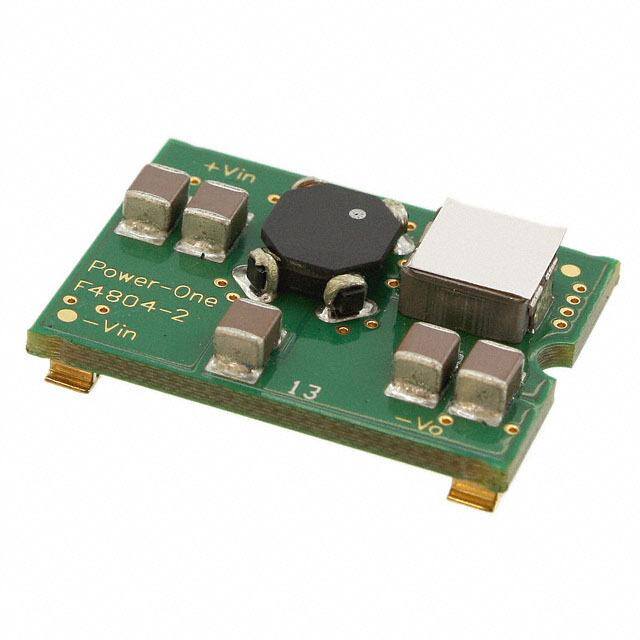
 Datasheet下载
Datasheet下载
